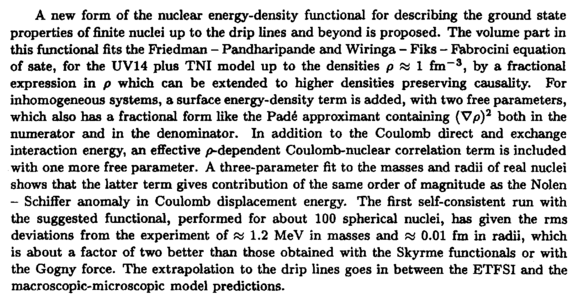|
|

| VOLUME 68 (1998) | ISSUE 3 |
PAGE 161
|
Towards a universal nuclear density functional
Fayans S.A.
ID: 21.10.Dr, 21.65.+f

|
|


